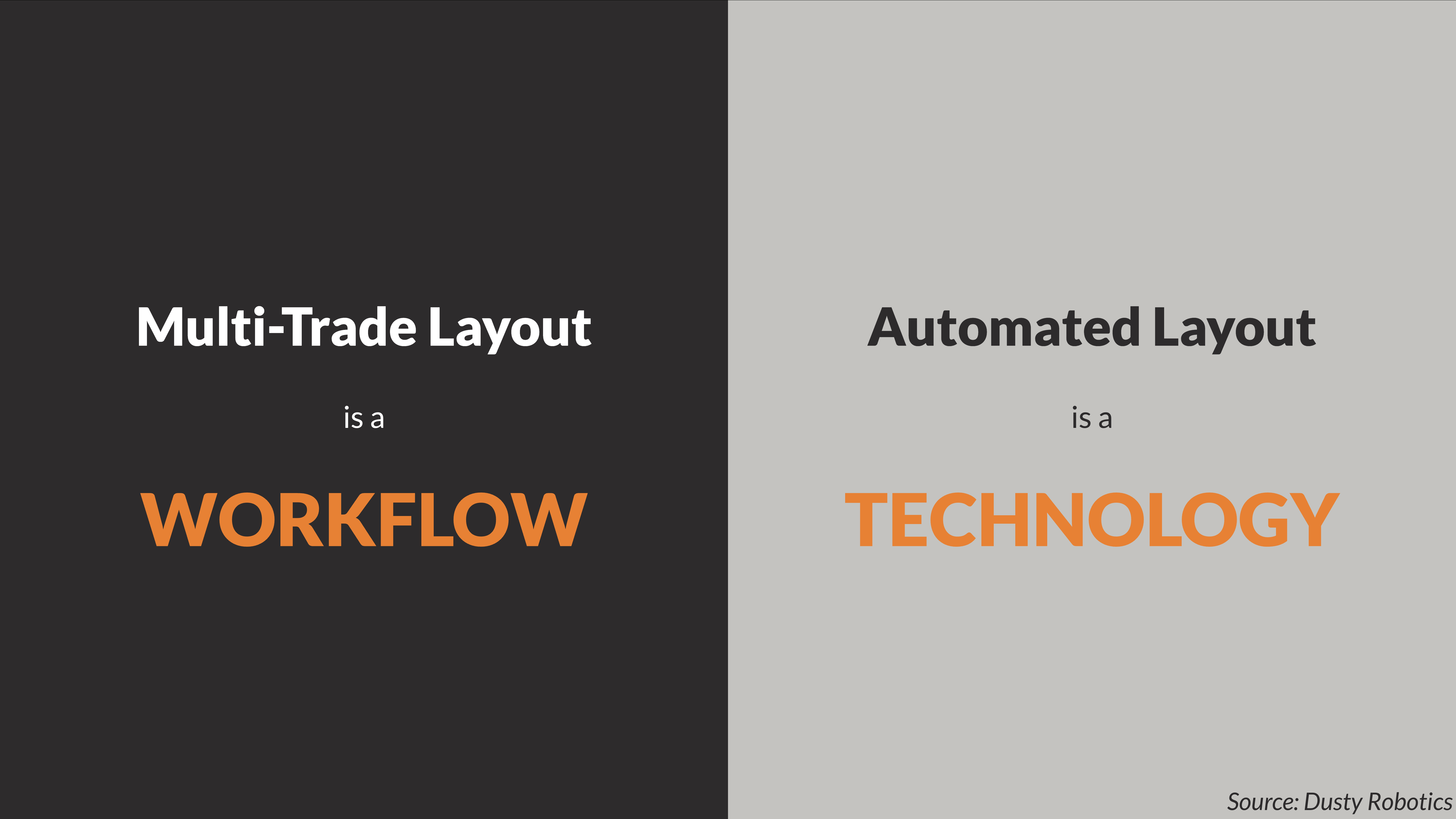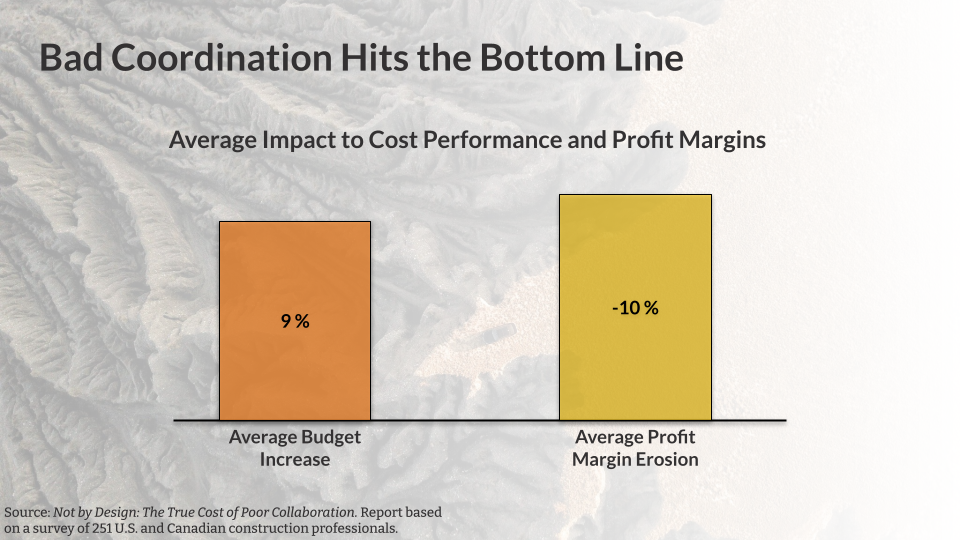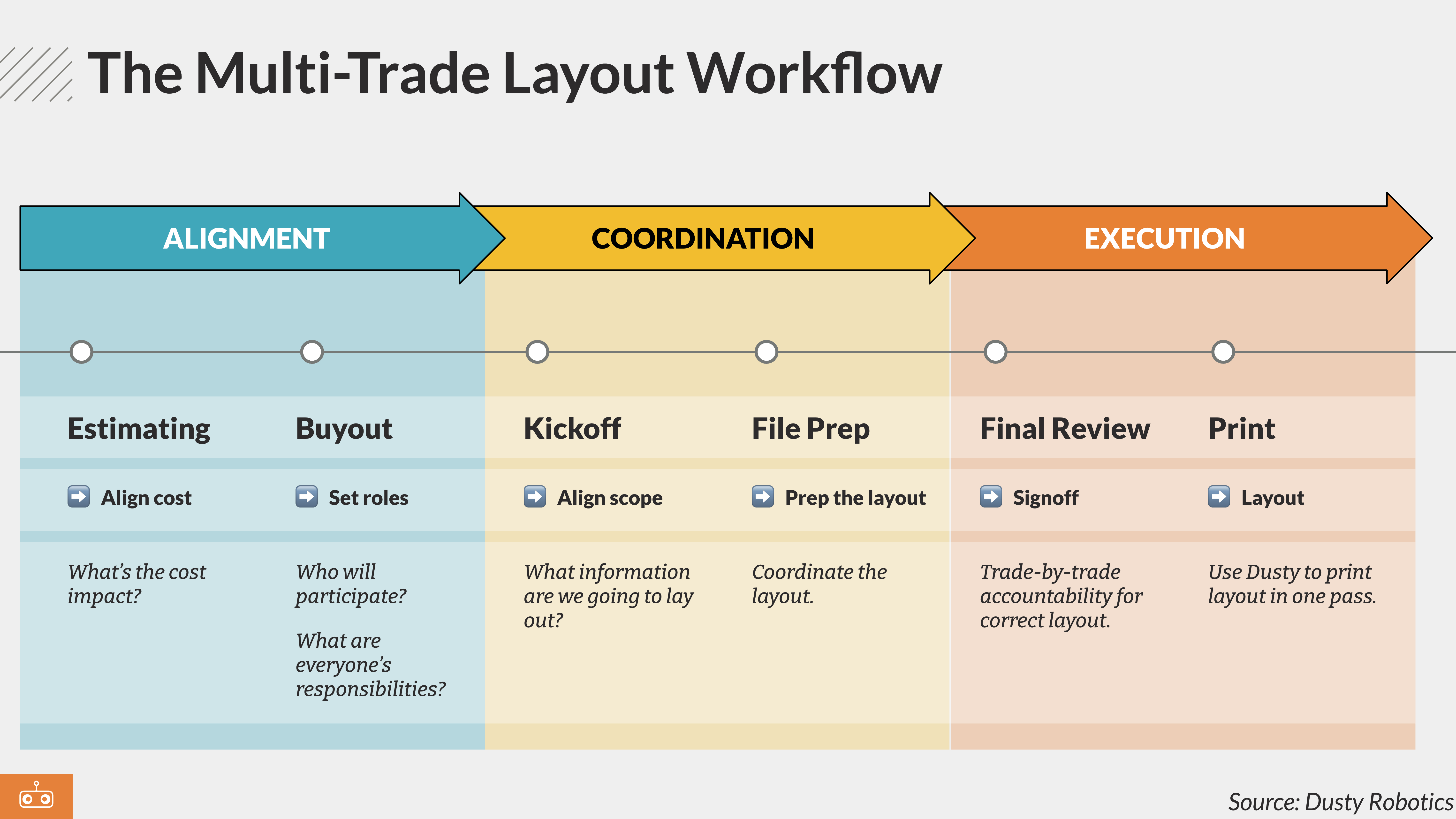Multi-Trade Layout: The Construction Workflow That Changes Everything
.png)
For years, layout has followed the same script: Each trade waits their turn, shows up to the jobsite, and lays out their scope — in isolation.
This sequential, siloed process has long been accepted as “just how it’s done.” But it’s also the source of some of construction’s most persistent problems: rework, schedule delays, trade conflicts, and finger-pointing.
That’s why forward-thinking general contractors are rewriting the script — and adopting a new approach: Multi-Trade Layout.
First, let’s get our terms straight

Before we go any further, it’s important to distinguish between two related — but different — ideas:
- Automated Layout is a technology, invented by Dusty Robotics. It uses a robot to print digital design information from the model directly onto the jobsite floor, at full scale. It replaces tape measures, string lines, and chalk boxes, and allows layout professionals to completely redefine what can be communicated to the field through layout.
- Multi-Trade Layout is a workflow that relies on Automated Layout technology. It’s a fundamentally different way of organizing how layout is done — where trades collaborate with the GC up front, agree on what will be laid out, and then execute layout together, in a single pass, using coordinated model data.
Multi-Trade Layout leverages Automated Layout much in the way VDC leverages BIM technology. It’s hard to imagine the workflow without the supporting technology.
But it’s possible to use Automated Layout technology without implementing a Multi-Trade Layout workflow. A single trade can use Automated Layout within their own scope of work, and within the status-quo trade-by-trade layout process. There’s value in that approach — speed, accuracy, better communication of the design to that trade’s field crews — but there’s also so much missed potential.
Multi-Trade Layout is not just faster layout. It’s more collaborative construction.
What makes Multi-Trade Layout different?
At its core, Multi-Trade Layout is about coordination before construction. It’s about doing the hard work of alignment up front — and using that shared alignment to accelerate the job in the field.
Here’s how it differs from the traditional layout process:

But isn’t layout the subcontractor’s job?
It used to be. But as project delivery methods trend towards more collaborative approaches with early builder participation, and as designs become more complex, GCs can’t afford to not participate in layout. Pushing layout onto the trades used to be smart risk mitigation, but today it’s a source of risk.
In fact, in a study of the impact of poor collaboration on the jobsite, Dodge Construction Network found that contractors experience an average 10% annual profit erosion as a result of poor coordination, and that project budgets increase by an average of 9%.

But Multi-Trade Layout doesn’t mean the GC is responsible for everybody’s layout. It may not even mean that the GC is operating the layout robot with its own labor (though some GCs make that choice).
It does mean the GC is leading the coordination of a single, shared layout scope during VDC in collaboration with the trades — and ensuring that the layout is transcribed to the field accurately and efficiently.
What does Multi-Trade Layout look like in practice?

A successful Multi-Trade Layout workflow includes:
- Alignment phase: Determine the cost, align on who will participate, and set roles and responsibilities. Establish contractual alignment.
- Coordination phase: Align on what information will be laid out, and coordinate the Multi-Trade Layout file for printing.
- Execution: Establish each trade’s accountability for correct layout, and print the layout on the jobsite.
Future blogs in this series will dive into these steps in detail.
This isn’t theory. It’s happening on major jobsites today — of all kinds, from hospitals to hotels, high rises, and data centers.
What project teams actually get from Multi-Trade Layout
Multi-Trade Layout gives GCs and trades:
- Schedule compression — Lay out the project 10X faster and boost installation efficiency
- Maximize human talent — Field professionals focus on building the project
- Cost savings — From labor and schedule efficiencies, and reduce rework
- Higher accuracy — Transcribe the model directly to the jobsite floor
- Fewer RFIs and field conflicts — Problems resolved before layout begins
- Stronger team alignment — Everyone’s on the same page — literally
- ROI on VDC — Translate investment in VDC to real risk reduction
It’s not about adding a robot. It’s about changing the rules.
Multi-Trade Layout isn’t just a step forward — it’s a shift in mindset.
It asks: What if layout wasn’t the job of each trade, performed in sequence, on their own?
What if it was a coordinated, shared effort that accelerated the whole job?
What if layout was a strategic advantage — not a risk?
That’s the promise of Multi-Trade Layout. And for GCs and trades who are ready to lead, it’s not just possible — it’s already happening.
This is part 2 of our series on Multi-Trade Layout Best Practices. We’re diving deep on the Multi-Trade Layout workflow that’s changing construction. We’ll cover everything from big-picture strategy to detailed tactics.



